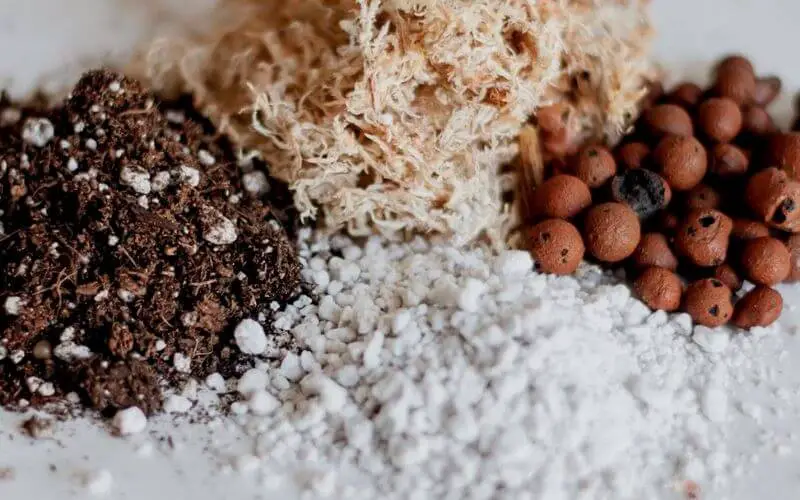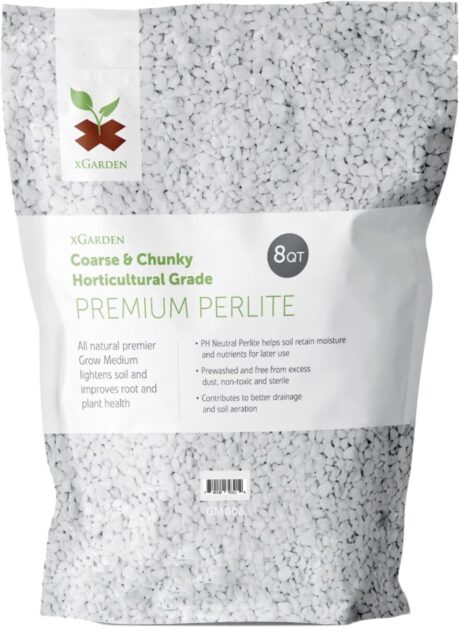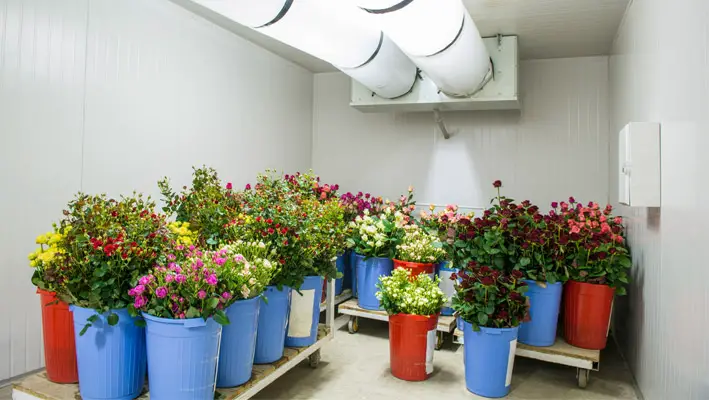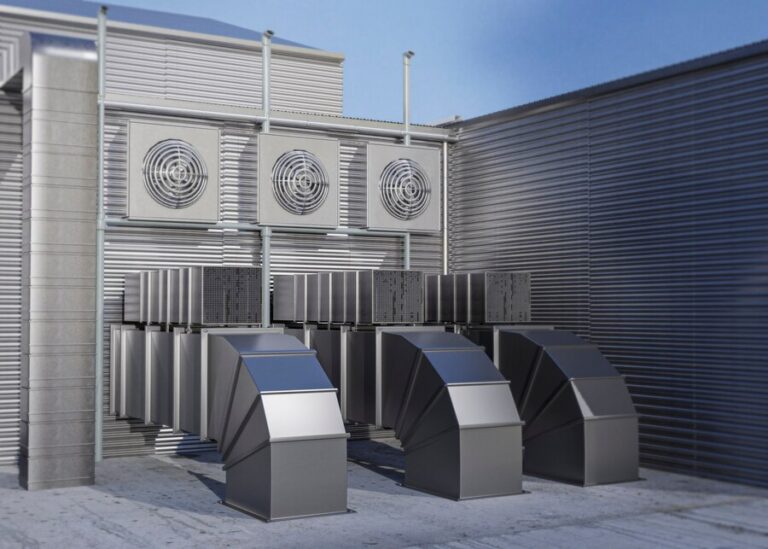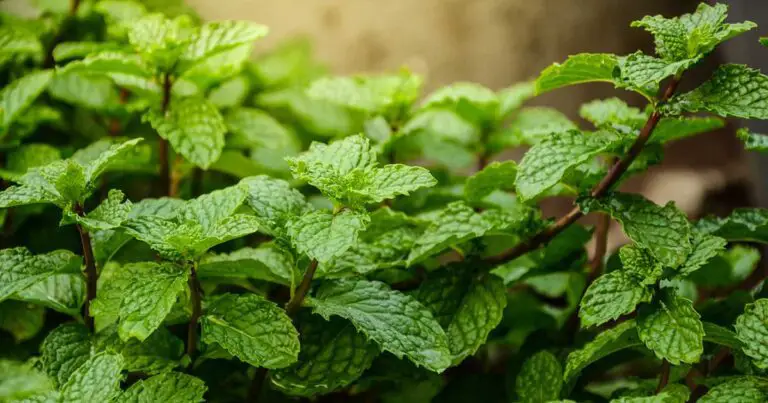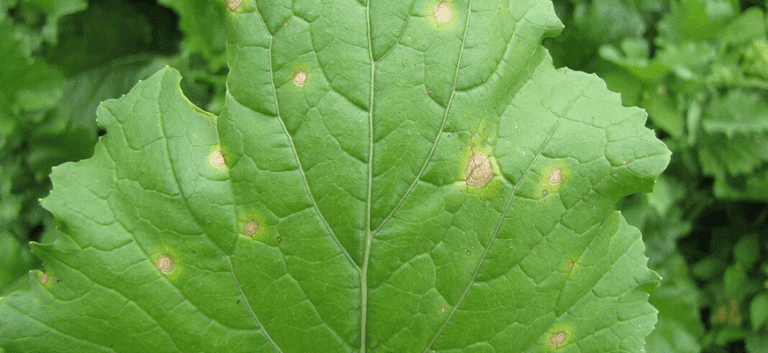Hydroponic Growing Media: The Only Guide You’ll Ever Need
Welcome to the ultimate guide on hydroponic growing media! Did you know that hydroponics can produce up to 30% higher yields compared to traditional soil-based gardening? In this comprehensive guide, we’ll dive into everything you need to know about selecting the perfect growing media for your hydroponic setup.
From rockwool to perlite, we’ll explore the pros and cons of each option, helping you make informed decisions for your indoor garden. Whether you’re a seasoned hydroponic enthusiast or just getting started, this guide will equip you with the knowledge and expertise to optimize your yields and maximize your harvests. Get ready to revolutionize your gardening game!
Table of Contents
Understanding the Importance of Growing Media in Hydroponics
The success of a hydroponic system heavily relies on the choice of growing media. Growing media serves as a support structure for the plants, anchoring their roots and providing stability. It also plays a vital role in regulating the availability of oxygen, water, and nutrients to the plants.
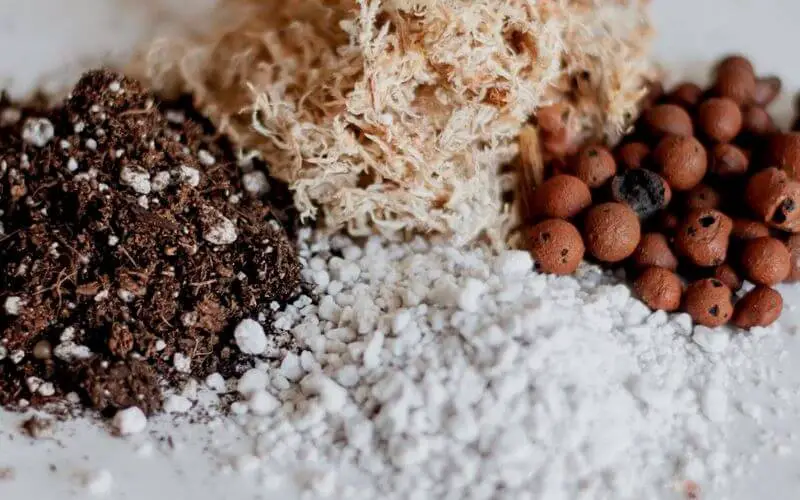
- Role of Growing Media in Hydroponics:
- Growing media significantly influence root zone physical properties, nutrient uptake, and water management in hydroponic systems.
- Media Variety and Benefits:
- Coco Coir and Rockwool: Provide excellent water retention while promoting adequate aeration.
- Expanded Clay Pellets and Perlite: Offer improved drainage and efficient air delivery to roots.
- Balancing Benefits and Considerations:
- Each media type presents a balance of advantages and considerations. Gardeners must evaluate them based on specific crop and system requirements.
- Informed Decision-Making:
- Understanding the importance of growing media in hydroponics empowers gardeners to make informed choices, creating environments tailored to their plant’s needs.
As we delve deeper into the exploration of various growing media options, we will evaluate their pros and cons, uncover their unique characteristics, and provide insights to help gardeners make the most appropriate decisions for their hydroponic systems.
Exploring Different Types of Growing Media for Hydroponic Systems
Hydroponic systems offer a unique and efficient way to cultivate plants without the use of soil. One of the key components of these systems is the growing media, which serves as a support structure for the plants and as a medium for water and nutrient delivery. Understanding the different types of growing media available for hydroponic systems is essential for successful cultivation.
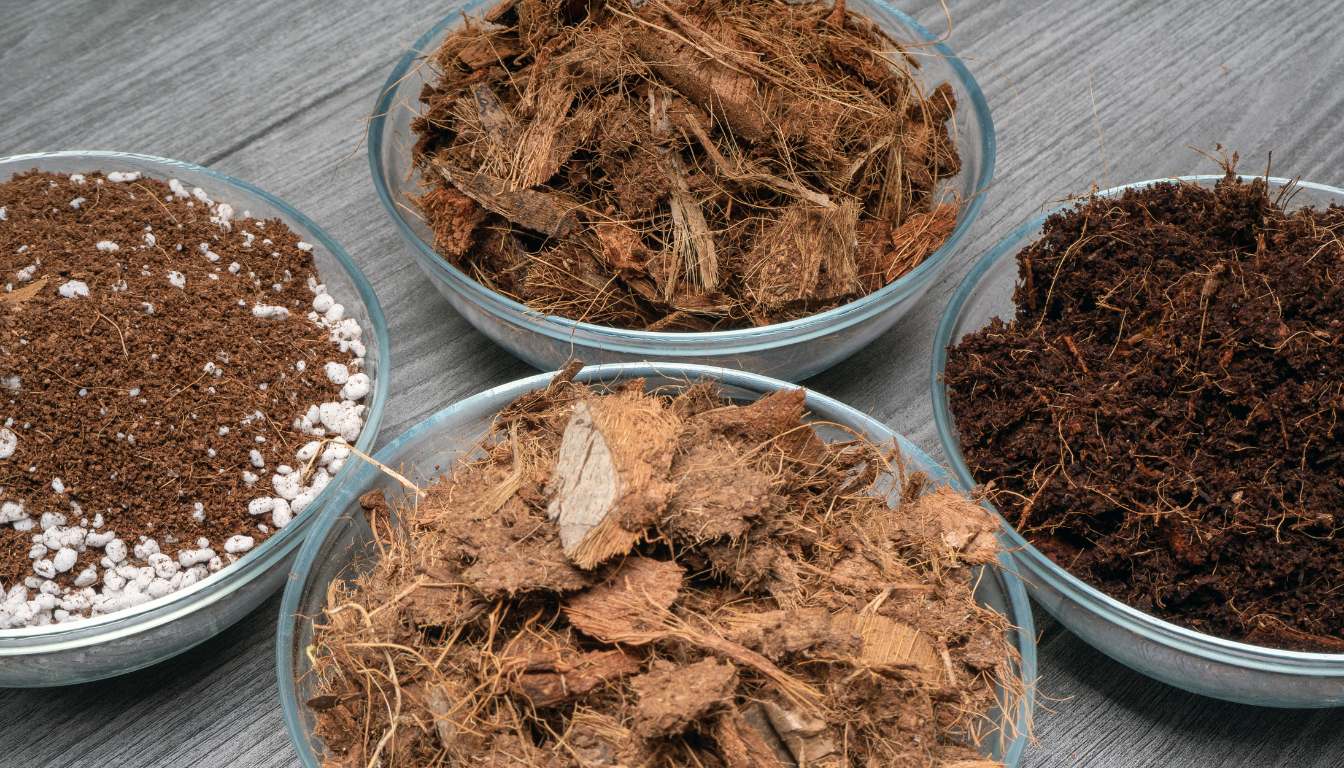
- Wide range of options, each with pros and cons
- Coco coir is gaining popularity for sustainability and moisture retention
- Rockwool is versatile, provides excellent aeration and drainage
- Other common media include perlite, vermiculite, expanded clay pellets, peat moss, coconut fiber
- Selection depends on plant needs and hydroponic system
- Consider factors like water retention, aeration, pH stability, nutrient absorption
- Carefully evaluate options to choose the best fit for plant species, system requirements, and personal preferences
In the following sections, we will explore the characteristics, advantages, and potential drawbacks of each type of growing media in detail, providing you with the information you need to make an informed decision for your hydroponic endeavors.
Evaluating the Pros and Cons of Soilless Growing Media in Hydroponics
Soilless growing media has become a popular choice for hydroponic systems, offering numerous benefits for gardeners and plant enthusiasts.
Advantages of Soilless Media
- Precise Control:
- Allows for exact management of nutrient delivery, pH levels, and water content.
- Eliminates soil variability, enabling fine-tuning of hydroponic setups to meet plant-specific needs.
- Results in improved growth and higher yields.
- Clean Growing Environment:
- Free from weeds, pests, and diseases commonly found in traditional soil.
- Reduces the need for harmful pesticides and lowers the risk of plant damage or crop failure.
- Lightweight and Easy to Handle:
- Soilless media are generally lightweight, making them easier to handle and transport.
- Ideal for urban gardening or small spaces, facilitating indoor or compact outdoor hydroponic setups.
- Sustainability:
- Offers sustainable solutions for future agricultural practices by maximizing space efficiency and minimizing pest and disease issues.
Drawbacks of Soilless Media
- Nutrient Monitoring:
- Requires careful and frequent monitoring of nutrient levels to ensure adequate supply.
- Plants are more susceptible to nutrient imbalances or deficiencies without a natural soil buffer.
- Decomposition and Replacement:
- Some soilless media may decompose or break down over time.
- Frequent replacement or refreshing can increase overall cost and maintenance, potentially deterring some gardeners.
Conclusion
Soilless growing media in hydroponics provide significant benefits, including precise nutrient control, avoidance of pests and diseases, and space efficiency. However, they require diligent nutrient monitoring and may incur higher maintenance costs. By weighing these pros and cons, gardeners can make informed decisions to optimize their hydroponic systems for successful and sustainable plant growth.
The following table explain the pros and cons of soilless growing media in hydroponics
| Pros | Cons |
| Allows precise control of nutrient levels for optimal plant growth. | Can have higher initial setup costs for specialized hydroponic equipment and media. |
| Minimizes the risk of soil-borne diseases and pests commonly found in traditional soil. | Requires careful monitoring and management of nutrient levels and pH. |
| Promotes better oxygen availability to plant roots, enhancing root health. | Limited buffering capacity compared to soil, making the system sensitive to pH fluctuations. |
| Enhances nutrient absorption by plants as nutrients are readily available in the root zone. | Production of some soilless media may have environmental implications. |
| Well-suited for vertical and space-limited growing systems. | Requires a learning curve for beginners in hydroponic systems |
Coco Coir: An Effective and Sustainable Option for Hydroponic Growing Media
Coco coir has become a popular choice for hydroponic growing media due to its effectiveness and sustainability. Derived from the husk of coconuts, coco coir offers several advantages for hydroponic cultivation. One of its key benefits is its ability to retain moisture while still providing excellent drainage, promoting healthy root development.
Naturally higher pH level, typically between 5.5 and 6.5, may require pH adjusters
Careful monitoring of pH and nutrient availability is essential for optimal plant nutrition
Coco coir can hold significant amounts of macro and micronutrients, which should be accounted for when formulating nutrient solutions
Pre-treating coco coir with calcium nitrate and EDTA can help remove excess nutrients and stabilize the medium
However, with its excellent water retention properties, coco coir provides a buffer against fluctuations in the hydroponic system, promoting a stable and consistent growing environment. Overall, coco coir offers a sustainable alternative to traditional growing media, maximizing plant growth potential while minimizing environmental impact.
The Back to the Roots Organic Coco Coir surpassed my expectations with its exceptional performance in my hydroponic setup. Its remarkable water retention capabilities, ensuring optimal moisture levels while allowing for proper root aeration, impressed me from the start. I noticed a significant improvement in the health and vigor of my plants, thanks to its pre-balanced nutrient content, providing a solid foundation for robust growth. What stood out to me was its user-friendly design, making it easy to incorporate into my gardening routine, whether I was a novice or an experienced enthusiast.
Furthermore, its organic and sustainable nature resonated with my values as a conscious gardener, adding to my overall satisfaction with the product. In conclusion, the Back to the Roots Organic Coco Coir is a standout choice for anyone seeking to elevate their hydroponic gardening experience.
- Organic Formula: Contains organic ingredients, providing a natural and sustainable option for plant nutrition.
- Balanced Nutrients: Provides a balanced mix of essential nutrients for healthy plant development, including nitrogen, phosphorus, and potassium.
- Starter Kit: Includes everything needed to kickstart plant growth, making it ideal for beginners or those looking for a convenient solution.
- Enriched with Coco Coir: Coco coir helps retain moisture and improve soil structure, promoting better root growth and overall plant health.
- Easy to Use: Simple instructions make it easy to apply, ensuring hassle-free feeding for your plants.
- Versatile: Suitable for a wide range of indoor and outdoor plants, from herbs and vegetables to flowers and ornamentals.
- Limited Quantity: The kit may not be sufficient for larger gardens or extensive planting projects.
- Price: Can be more expensive compared to traditional fertilizers, especially for larger-scale use.
- Requires Regular Application: As with any fertilizer, regular application may be necessary to maintain optimal plant health.
- Potential Odor: Some users may find the organic ingredients produce a noticeable odor during application.
- Not Instant Results: While effective, results may take time to become evident, requiring patience from the user.
- Packaging Concerns: Packaging materials may not be fully recyclable, posing environmental considerations.
Rockwool: A Versatile and Widely Used Medium for Hydroponic Cultivation
Rockwool is a highly versatile and widely used medium in hydroponic cultivation. It has gained popularity among growers due to its excellent water retention and aeration properties.
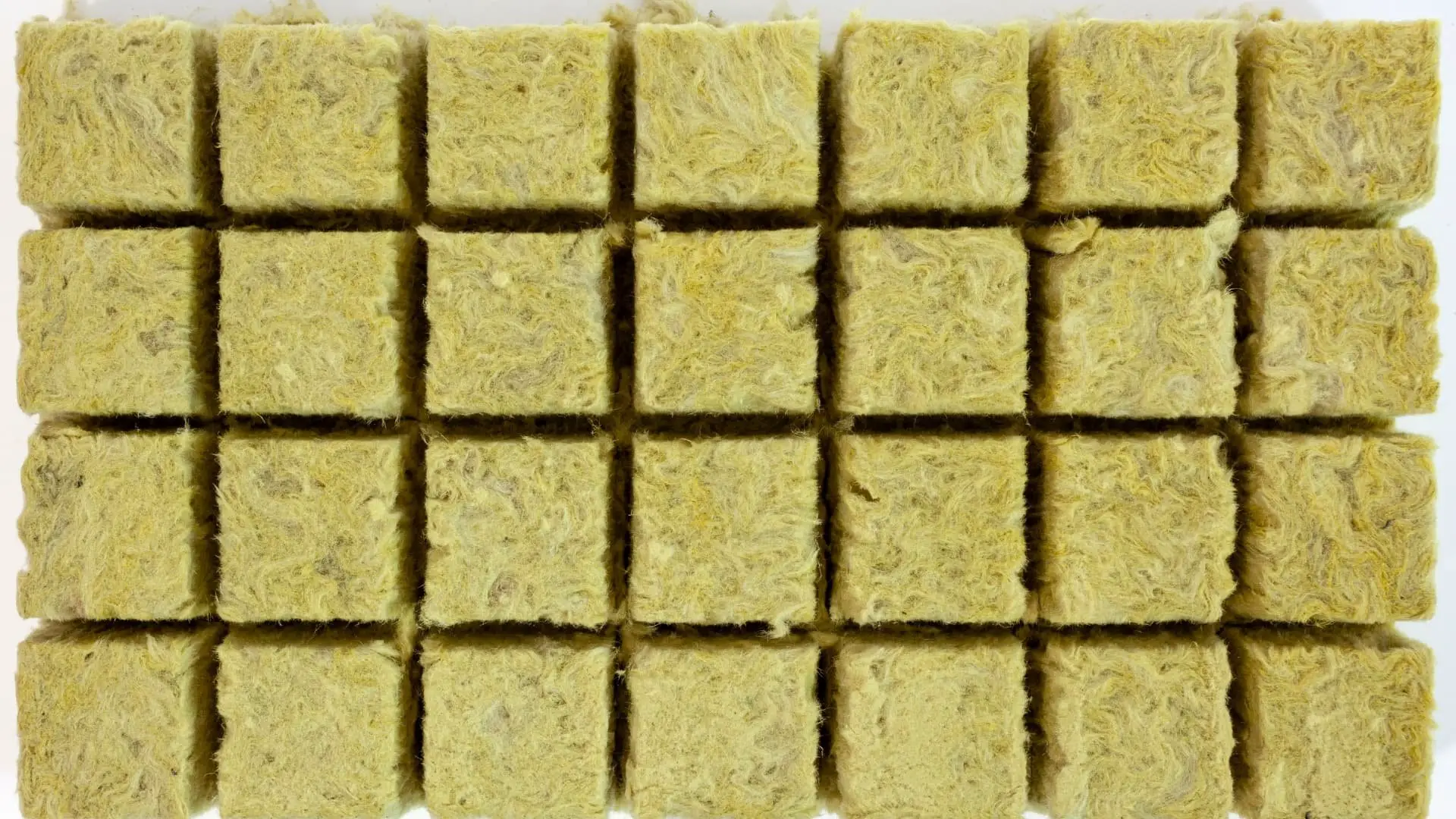
Rockwool as a Growing Medium
- Composition and Structure:
- Made from molten basalt rock spun into fibers and formed into blocks or cubes.
- Provides a stable and inert structure for plant roots to anchor and grow.
Advantages of Using Rockwool
- Moisture Retention and Drainage:
- Holds moisture effectively while allowing for adequate drainage.
- Ensures a consistent supply of water, preventing root suffocation and promoting healthy root development.
- Oxygenation:
- The porous nature of rockwool enhances root oxygenation.
- Improved oxygenation is vital for nutrient uptake and overall plant health.
Benefits for Plant Growth
- Stable Growth Environment:
- Rockwool’s stable structure supports robust root growth, providing a reliable foundation for plants.
- Optimal Root Environment:
- Balances moisture retention and drainage, creating an ideal environment for root development and function.
- Promotes healthy, oxygenated roots, which are essential for effective nutrient absorption and plant vigor.
Summary
Rockwool, derived from molten basalt rock, offers a stable and inert growing medium that excels in moisture retention and drainage. Its ability to maintain an optimal balance of water and air around the roots fosters robust root development and enhances overall plant health. These characteristics make rockwool an excellent choice for hydroponic systems and other soilless growing setups.
Perlite: Enhancing Drainage and Aeration in Hydroponic Systems
Perlite is a popular and widely used growing media in hydroponic systems due to its excellent ability to enhance drainage and aeration. Derived from volcanic rock, perlite is processed into small, lightweight particles that provide numerous benefits for hydroponic plants.
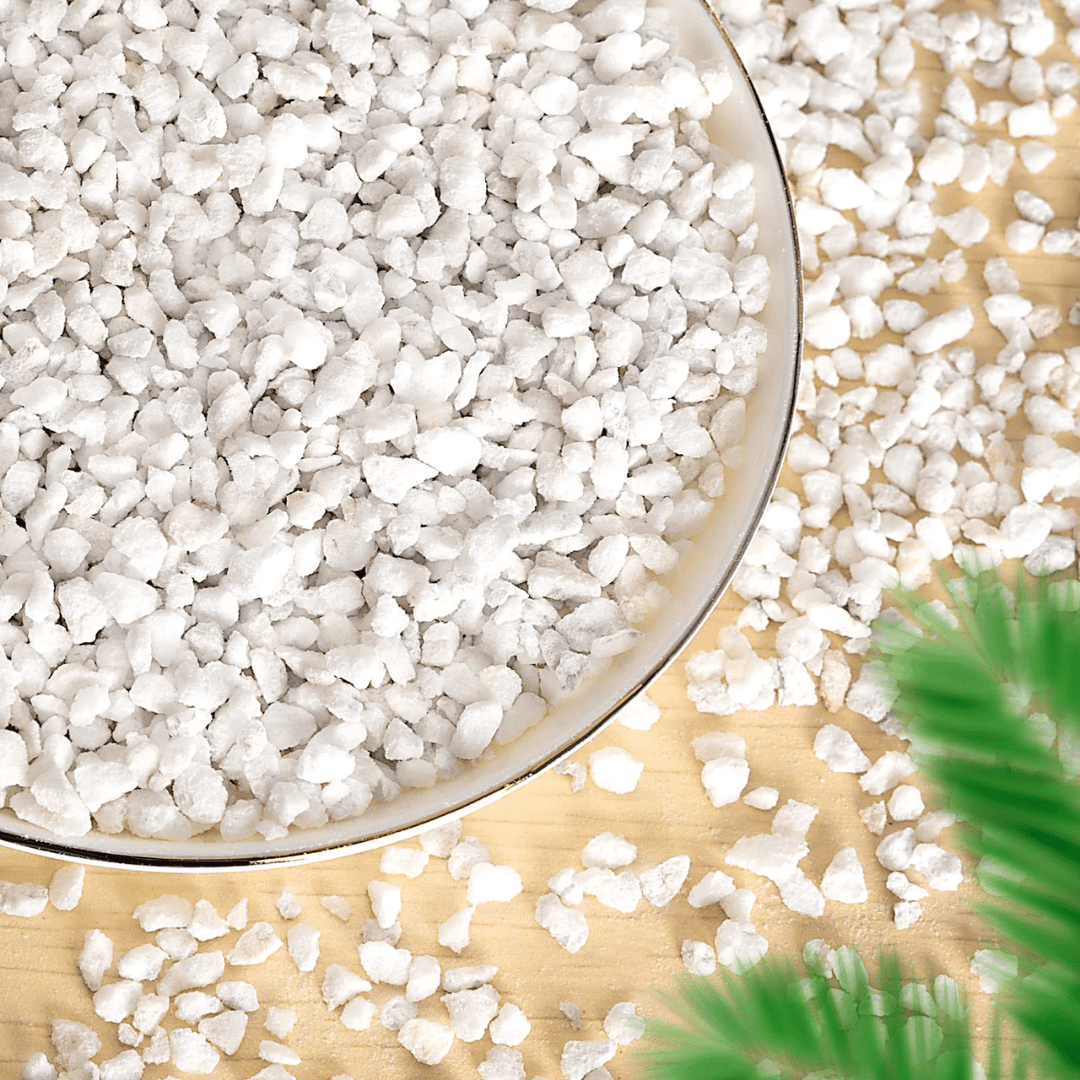
Advantages of Perlite in Hydroponic Systems
Improved Drainage:
- The porous nature of perlite allows water to flow freely through the growing medium.
- Prevents waterlogging and ensures roots have access to the optimal amount of oxygen.
- Crucial for preventing root rot and other water saturation issues, promoting overall plant health and growth.
Enhanced Aeration:
- Perlite’s air-filled cavities create pockets of oxygen around the roots.
- Promotes healthy respiration and prevents the development of anaerobic conditions.
- Provides necessary oxygen for efficient nutrient uptake, contributing to vigorous plant growth and development.
Lightweight and Easy Handling:
- Perlite is lightweight, making it convenient to work with in hydroponic setups.
- Easy to handle and transport, simplifying the setup and maintenance of hydroponic systems.
Neutral pH:
- Perlite has a neutral pH value, ensuring it does not affect the nutrient balance in the growing solution.
- Allows for precise control over the plant’s nutrient intake, supporting optimal growth conditions.
Benefits for Hydroponic Plant Growth
Optimal Root Health:
- By enhancing drainage and aeration, perlite supports healthy root development.
- Prevents common hydroponic issues like root rot and nutrient deficiencies.
Vigorous Plant Growth:
- Improved oxygenation and nutrient uptake lead to stronger, more vigorous plant growth.
- Ensures plants receive the right balance of water and air, crucial for robust development.
Convenience and Efficiency:
- Lightweight and easy-to-handle nature of perlite simplifies hydroponic gardening tasks.
- Its stability and neutral pH contribute to a balanced and efficient growing environment.
Summary
Perlite is a valuable addition to hydroponic systems due to its ability to improve drainage and aeration. Its porous structure allows for optimal water flow and oxygenation, preventing root rot and promoting healthy root development. Lightweight and easy to handle, perlite is convenient for hydroponic setups and does not affect nutrient balance with its neutral pH. These characteristics make perlite an excellent choice for enhancing root health and overall plant growth in hydroponic gardening.
I recently incorporated the xGarden Horticultural Grade Premium Perlite into my hydroponic setup, and it has proven to be a valuable addition to my gardening arsenal. Its excellent drainage properties have helped maintain optimal moisture levels in the growing medium, preventing waterlogging and ensuring healthy root development. The enhanced aeration provided by the perlite has contributed to robust plant growth, with improved oxygenation of the root zone. Its lightweight nature made it easy to handle and mix into the growing medium, facilitating hassle-free gardening.
While I appreciated its versatility for various gardening applications, including seed starting and container gardening, I found that careful handling was necessary due to its dusty nature. Despite this minor inconvenience, the perlite’s pH neutrality and reusability further added to its appeal.
Overall, the xGarden Horticultural Grade Premium Perlite has proven to be a reliable and effective component of my hydroponic system, contributing to the success of my gardening endeavors.
✅ Enhanced Aeration: Improves soil aeration, ensuring sufficient oxygen reaches plant roots for healthy growth.
✅ Lightweight: Easy to handle and transport, making it convenient for gardening projects.
✅ pH Neutral: Maintains a neutral pH level, providing a suitable environment for a wide range of plants.
✅ Versatile: Suitable for use in various gardening applications, including seed starting, container gardening, and soil conditioning.
✅ Reusable: Can be reused multiple times, offering long-term value and sustainability.
❌ Volume: The package size may not be sufficient for large-scale gardening projects, requiring multiple purchases.
❌ Floatation: Perlite particles may float to the surface in hydroponic systems, requiring occasional redistribution.
❌ Cost: Compared to other soil amendments, perlite can be relatively expensive, impacting budget-conscious gardeners.
❌ Storage: Requires proper storage to prevent moisture absorption and maintain its effectiveness over time.
❌ Environmental Impact: While perlite is natural, its mining process may have environmental implications in some regions.
Vermiculite: Improving Water Retention and Nutrient Absorption in Hydroponics
Vermiculite is a highly versatile growing medium that offers numerous benefits for hydroponic cultivation.

Advantages of Vermiculite in Hydroponic Gardening
- Vermiculite has a unique structure that absorbs and holds moisture effectively.
- Ensures a consistent water supply for plants, crucial in hydroponic systems where plants rely solely on nutrient-rich water solutions.
- Prevents dehydration and maintains optimal moisture levels, resulting in healthier and more vigorous plant growth.
Nutrient Absorption:
- The mineral-rich composition of vermiculite provides a steady supply of essential nutrients to the root system.
- As plants extract water from the growing medium, they also absorb the nutrients present in the vermiculite, ensuring a well-balanced nutrient supply.
- Promotes robust growth, preventing stunted development and reduced crop yields.
- Retains nutrients, minimizing nutrient leaching and ensuring efficient use of resources.
- Reduces the risk of nutrient imbalances in the hydroponic system.
Benefits for Plant Growth and Hydroponic Efficiency
Overall Plant Health:
- Vermiculite supports the overall health and vitality of hydroponic plants by providing a stable and consistent supply of water and nutrients.
- Enhances the efficiency and sustainability of the growing system, making it an excellent choice for hydroponic gardening.
System Efficiency:
- By improving water retention and nutrient absorption, vermiculite contributes to the efficient functioning of hydroponic systems.
- Reduces the need for frequent watering and nutrient replenishment, saving time and resources for gardeners.
Summary
Vermiculite’s ability to improve water retention and facilitate nutrient absorption makes it an excellent choice for hydroponic gardening. Its unique properties support plant health and vitality, while also enhancing the efficiency and sustainability of the growing system. By maintaining optimal moisture levels and providing a steady supply of essential nutrients, vermiculite helps hydroponic plants thrive and achieve robust growth.
Whether you are a novice hydroponic enthusiast or an experienced gardener, incorporating vermiculite as a growing medium can greatly enhance your hydroponic setup and help you achieve successful and bountiful crops.
Expanded Clay Pellets: A Lightweight and Inert Medium for Hydroponic Plants
Expanded clay pellets, also known as hydroton or LECA (lightweight expanded clay aggregate), are a popular choice of growing media in hydroponic systems. These porous pellets are made by heating clay at high temperatures, causing it to expand and form lightweight balls.
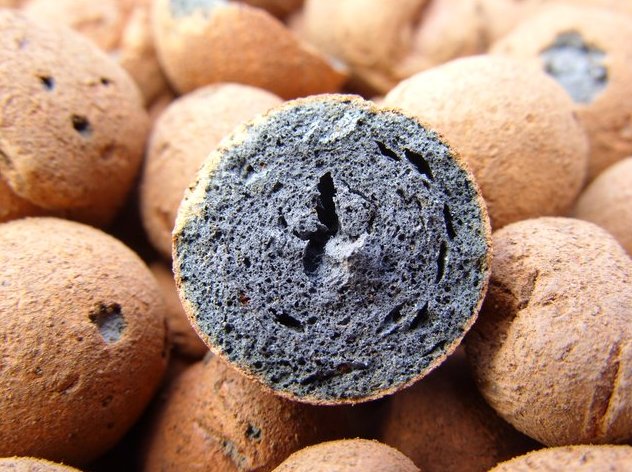
- Inert nature does not release or absorb substances that could affect nutrient balance
- Excellent drainage and aeration properties
- Lightweight and easy to handle
- Reusable and durable
- pH neutral and inhospitable to pests and diseases
By leveraging these advantages, hydroponic growers can create an optimal root zone environment for their plants, leading to improved growth, health, and yields.Overall, expanded clay pellets offer a versatile and reliable growing medium for hydroponic plants, allowing for optimal nutrient uptake and root development.
Incorporating the xGarden LECA Expanded Clay Pebbles into my hydroponic system has significantly enhanced my gardening experience. These lightweight and porous clay pellets have proven to be an excellent choice for maintaining optimal moisture levels and promoting healthy root development. Their exceptional drainage properties have prevented waterlogging, ensuring that my plants receive adequate oxygenation for robust growth.
Despite the initial rinsing required to remove excess dust, I found these pellets to be durable and reusable, offering long-term value for my gardening projects. While the upfront cost may be higher compared to other hydroponic media, their versatility and performance make them a worthwhile investment. Overall, the xGarden LECA Expanded Clay Pebbles have exceeded my expectations, contributing to the success of my hydroponic endeavors.
- Excellent Drainage: Promotes efficient drainage in hydroponic systems, preventing waterlogging and ensuring healthy root growth.
- Increased Aeration: Enhances oxygenation of the root zone, facilitating nutrient uptake and promoting vigorous plant growth.
- pH Neutral: Maintains a neutral pH level, providing a stable growing environment suitable for a wide range of plants.
- Reusable: Can be reused multiple times, offering long-term value and sustainability for gardening projects.
- Durable: Resistant to decomposition and degradation, ensuring lasting performance in hydroponic systems.
- Versatile: Suitable for various hydroponic setups, including flood and drain, drip systems, and deep water culture.
- Cost: Compared to other hydroponic media, clay pellets can be relatively expensive, impacting budget-conscious gardeners.
- Size Variation: Some users may encounter variations in pellet size, requiring sorting for uniformity in the growing medium.
- Dustiness: Initial rinsing may be necessary to remove excess dust from the clay pellets before use, which can be time-consuming.
- Floatation: Clay pellets may float to the surface in deep water culture systems, requiring additional weight or anchoring to keep plants stable.
- Storage Space: Requires ample storage space when not in use, as the pellets can take up considerable room.
- Environmental Impact: While reusable, the production process of clay pellets may have environmental implications, depending on the source and manufacturing methods used.
Peat Moss: Balancing Water Retention and Aeration in Hydroponic Gardening
Peat moss is a commonly used growing medium in hydroponic gardening due to its unique ability to balance water retention and aeration. Its fibrous structure allows it to hold moisture while also providing adequate oxygen to the plant roots. This is crucial in maintaining a healthy root system, as improper water levels can lead to root rot or suffocation.
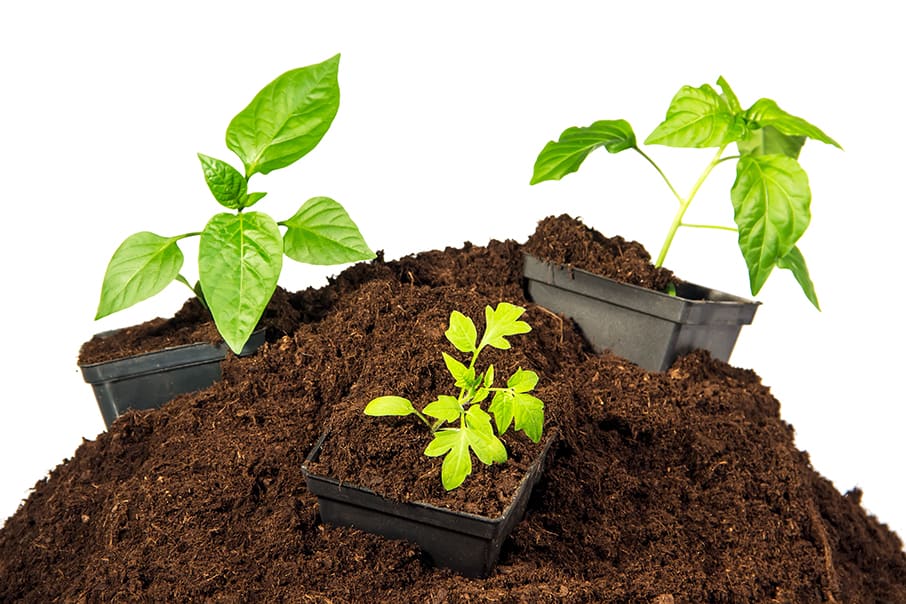
- High water holding capacity:
- Peat moss can absorb and retain a significant amount of water, ensuring steady moisture supply to roots
- Particularly advantageous in hydroponic systems where plants rely on nutrient-rich water solution.
- Proper aeration within the root zone:
- Contribution to growing media structure and pH balance:
- Limitations of peat moss:
By understanding the water retention, aeration, structural benefits, and limitations of peat moss, growers can make informed decisions on its usage in hydroponic systems, ensuring optimal plant growth while considering environmental sustainability and nutrient balance.
Coconut Fiber: Harnessing the Benefits of a Natural and Organic Growing Medium
Coconut fiber, also known as coir, has gained popularity as a natural and organic growing medium in hydroponics. Derived from the husk of coconuts, this fibrous material offers numerous benefits for plant cultivation.
Benefits of Coir in Hydroponic Systems

Excellent Aeration and Drainage:
- Coir’s highly porous nature promotes excellent aeration, ensuring roots receive ample oxygen.
- Provides efficient drainage, preventing waterlogging and reducing the risk of root rot and other water-related issues.
High Water-Holding Capacity:
- Retains a significant amount of water, ensuring plants have access to moisture even during dry spells or limited watering.
- Helps maintain optimal hydration levels, reducing the risk of drought stress and supporting consistent plant growth.
Sustainable and Renewable Resource:
- Made from coconut husks, a byproduct of the coconut industry, coir is a renewable resource.
- Utilizing coir contributes to waste reduction and supports environmental preservation by repurposing agricultural byproducts.
Biodegradable:
- Coir is biodegradable, decomposing easily after use and minimizing environmental impact.
- Ensures minimal ecological footprint, promoting sustainable gardening practices.
Advantages for Hydroponic Plant Growth
Healthy Root Development:
- Enhanced aeration and drainage promote robust root systems, essential for nutrient uptake and overall plant health.
- Prevents common hydroponic issues like root rot, ensuring healthy and vigorous growth.
Consistent Moisture Levels:
- High water-holding capacity helps maintain consistent moisture levels, crucial for steady plant growth.
- Reduces the frequency of watering, making hydroponic systems more efficient and less labor-intensive.
Environmental Benefits:
- Using coir supports sustainable gardening practices and reduces reliance on non-renewable resources.
- Biodegradability ensures that spent coir does not contribute to long-term environmental waste.
Summary
Coir is an exceptional growing medium for hydroponic systems due to its excellent aeration, drainage, and high water-holding capacity. It supports healthy root development and consistent moisture levels, reducing the risk of root rot and drought stress. As a sustainable and renewable resource, coir contributes to waste reduction and environmental preservation. Its biodegradable nature ensures minimal environmental impact, making coir an environmentally friendly choice for hydroponic gardening.
Whether you are a beginner or an experienced hydroponic gardener, incorporating coconut fiber into your growing media can provide you with a versatile and eco-friendly solution for nurturing your plants.
Choosing the Right Growing Media for Different Hydroponic Crops
As a hydroponics enthusiast, one of the key considerations when setting up your system is selecting the right growing media for different crops. The growing media you choose plays a crucial role in providing support, aeration, and nutrient availability to the plants. Each type of media offers unique advantages and disadvantages, so it’s essential to understand which one suits your specific crop requirements.
Leafy Greens and Herbs (Lettuce, Basil):
- Preferred Media: Perlite or expanded clay pellets.
- Benefits:
- Lightweight and well-draining.
- Promote excellent aeration.
- Prevent waterlogged roots for healthy plant growth.
Crops with Extensive Root Systems (Tomatoes, Cucumbers):
- Preferred Media: Coconut fiber or rockwool.
- Benefits:
- Provide better structural support.
- Enhance water retention.
- Allow for adequate drainage.
Nutritional Considerations:
- Water Retention and Nutrient Absorption:
- Media: Coco coir, vermiculite.
- Benefits:
- Natural water retention properties.
- Improve nutrient absorption and root health.
- pH Balancing:
- Media: Peat moss.
- Benefits:
- pH-balancing effect.
- Suitable for crops preferring slightly acidic conditions.
Experimenting with different growing media can be a valuable learning experience, allowing you to understand which medium best suits your crop’s needs. Remember to consider factors such as water retention, aeration, pH balance, and the specific requirements of your plants. By selecting the right growing media, you can ensure your hydroponic crops thrive and achieve optimal yields.
The Role of pH and Nutrient Availability in Hydroponic Growing Media
pH and nutrient availability play a crucial role in hydroponic growing media, as they directly impact the overall health and development of plants. The pH level of the growing media determines the availability of essential nutrients to the plants. It is important to maintain the pH within the optimum range to ensure proper nutrient uptake.
Different plants have specific pH preferences for optimal growth.
Most plants thrive in a slightly acidic to neutral pH range of 5.5 to 6.5.
Blueberries prefer more acidic conditions.
Lettuce can tolerate a slightly higher pH.
Deviation from the desired pH range can lead to nutrient deficiencies or toxicity.
Nutrient imbalances result in stunted growth and poor yields.
Regularly monitor pH levels in the growing media.
Use pH adjusters, like pH-up or pH-down solutions, to maintain the correct pH.
Ensuring balanced nutrient uptake promotes healthier plant growth.
The following table show about the role of pH and nutrient availability in hydroponic growing media:
| Key Factors | Description |
| Optimal pH Range | Maintain pH within the ideal range for hydroponics, typically 5.5 to 6.5. |
| Nutrient Absorption | pH influences nutrient availability and absorption by plant roots. |
| pH Adjustments | Regularly monitor and adjust pH to ensure nutrient uptake efficiency. |
| Nutrient Form Availability | pH affects the chemical forms of nutrients, impacting their availability to plants. |
| Alkalinity Impact | High alkalinity can elevate pH, potentially leading to nutrient deficiencies. |
| Microbial Activity | pH levels influence microbial activity in the growing media, affecting nutrient cycling. |
Contains essential macronutrients (nitrogen, phosphorus, potassium) and micronutrients (calcium, magnesium, iron, etc.).
Balanced ratio ensures optimal plant growth and development.
Monitoring: Regularly assess nutrient levels in the growing media.
Adjustment: Make necessary adjustments to maintain optimal nutrient availability.
Nutrient imbalances can lead to deficiencies or toxicities.
Impact plant health and productivity negatively.
Follow recommended guidelines for nutrient solution composition.
Conduct regular water and nutrient solution analysis.
Fine-tune nutrient levels to provide ideal conditions for plant growth.
In the next section of this article, we will explore methods for maintaining and reusing hydroponic growing media for long-term sustainability. By implementing effective practices, gardeners can minimize waste, reduce costs, and promote a more environmentally friendly approach to hydroponic cultivation.
Maintaining and Reusing Hydroponic Growing Media for Long-Term Sustainability
Maintaining and reusing hydroponic growing media is essential for achieving long-term sustainability in your hydroponic system. By properly caring for your growing media, you can extend its lifespan and maximize its effectiveness in providing essential nutrients and support for your plants.

- Regularly monitor and adjust pH levels in the growing media to maintain the appropriate range (typically 5.5-6.5) for optimal nutrient availability and plant health.
- Use pH testing kits, meters, or probes to accurately measure pH and make gradual adjustments with pH up/down solutions as needed.
- In recirculating systems, test and adjust pH in the reservoir, while in media-based systems, test the leachate draining from the grow beds.
- Factors like plant nutrient uptake, decomposing organic matter, carbonate deposits, and nutrient imbalances can cause pH fluctuations that require monitoring and correction.
- Periodically flush the growing media with clean, pH-balanced water to remove excess nutrient buildup and maintain a balanced state.
- Reuse growing media after sterilization and treatment to eliminate pathogens, reducing waste and promoting sustainability in hydroponic gardening.
In conclusion, maintaining and reusing hydroponic growing media is crucial for long-term sustainability in hydroponic systems. By monitoring pH levels, managing nutrient buildup, and reusing media, you can optimize the performance of your system, reduce costs, and contribute to a more sustainable approach to gardening.
Troubleshooting Common Issues with Hydroponic Growing Media and Solutions
Hydroponic growing media plays a crucial role in the success of a hydroponic system. However, like any gardening technique, issues can arise that hinder plant growth and productivity. Understanding and troubleshooting these common issues is essential for hydroponic gardeners to maximize their yields.
Poor Drainage:
- Issue: Excess water accumulation around roots, leading to root rot and nutrient uptake issues.
- Solution: Use growing media with improved drainage properties, such as perlite or expanded clay pellets.
- Promote free flow of water and air around the root zone.
- Prevent waterlogging and support healthy root development.
pH Imbalance:
- Issue: Inappropriate pH level affecting nutrient availability and absorption.
- Solution: Regularly monitor and adjust pH of nutrient solution.
- Use pH test kits or digital meters for monitoring.
- Consider pH-stabilizing additives or adjusting nutrient solution composition.
- Ensure balanced pH level for optimal plant growth.
As with any gardening technique, troubleshooting common issues with hydroponic growing media requires careful observation and proactive intervention. By addressing drainage problems and maintaining the appropriate pH level, gardeners can overcome these challenges and cultivate thriving hydroponic gardens.
For more information watch the given video:
FAQ
What should I do if my hydroponic plants are not growing well in the chosen growing media?
If your plants are not growing well, it may indicate a problem with the growing media. Check the pH levels and nutrient availability in the media. Adjust them accordingly to ensure optimal conditions for plant growth.
Can I use regular soil as a growing media in hydroponics?
No, regular soil is not suitable for hydroponic systems as it can clog the system and interfere with nutrient uptake. Hydroponics requires soilless growing media that provide proper drainage, aeration, and nutrient absorption.
How often should I replace the hydroponic growing media?
The frequency of replacing the growing media depends on various factors such as the type of media used, crop being grown, and maintenance practices. Generally, it is recommended to replace the media every 6-12 months or as needed to maintain optimal conditions.
What can I do if my hydroponic system experiences poor drainage and aeration with the chosen growing media?
If you are facing issues with drainage and aeration, consider adding perlite or expanded clay pellets to the growing media. These additives improve drainage and increase oxygen availability to the plant roots.
Can I reuse hydroponic growing media?
Yes, hydroponic growing media can be reused to promote long-term sustainability. Before reusing, it is essential to properly clean and sterilize the media to eliminate any potential pathogens or diseases.
How do I troubleshoot nutrient deficiencies in the hydroponic growing media?
Nutrient deficiencies can be identified through visual symptoms on the plants. Conduct regular nutrient testing and adjust the nutrient solution accordingly to address any deficiencies. It is also important to ensure proper pH levels for optimal nutrient availability.
What should I do if my hydroponic plants show signs of root rot in the growing media?
Root rot can occur due to excessive moisture or poor drainage in the growing media. Improve drainage by adding perlite or adjusting the watering schedule. Additionally, consider using beneficial bacteria or fungicides to control and prevent root rot.
How do I prevent algae growth in the hydroponic growing media?
Algae growth can be prevented by keeping the growing media clean and free from excessive moisture. Avoid overwatering and ensure proper aeration in the system. If algae still persists, consider using light-blocking covers or implementing a UV sterilization system
Can I mix different types of growing media in my hydroponic system?
Yes, you can mix different types of growing media to create a customized blend that suits your specific plant’s needs. However, it is important to consider the compatibility and characteristics of each media component to ensure proper drainage, aeration, and nutrient absorption.
How do I test the pH levels of the hydroponic growing media?
pH test kits or digital pH meters can be used to measure the pH levels of the growing media. Take samples of the media and mix them with distilled water. Follow the instructions provided with the test kit or meter to obtain accurate pH readings.

Studied Agricultural Engineering-Plant Protection at University of California, Davis.
Head of Content writing team at Southelmontehydroponics.com

